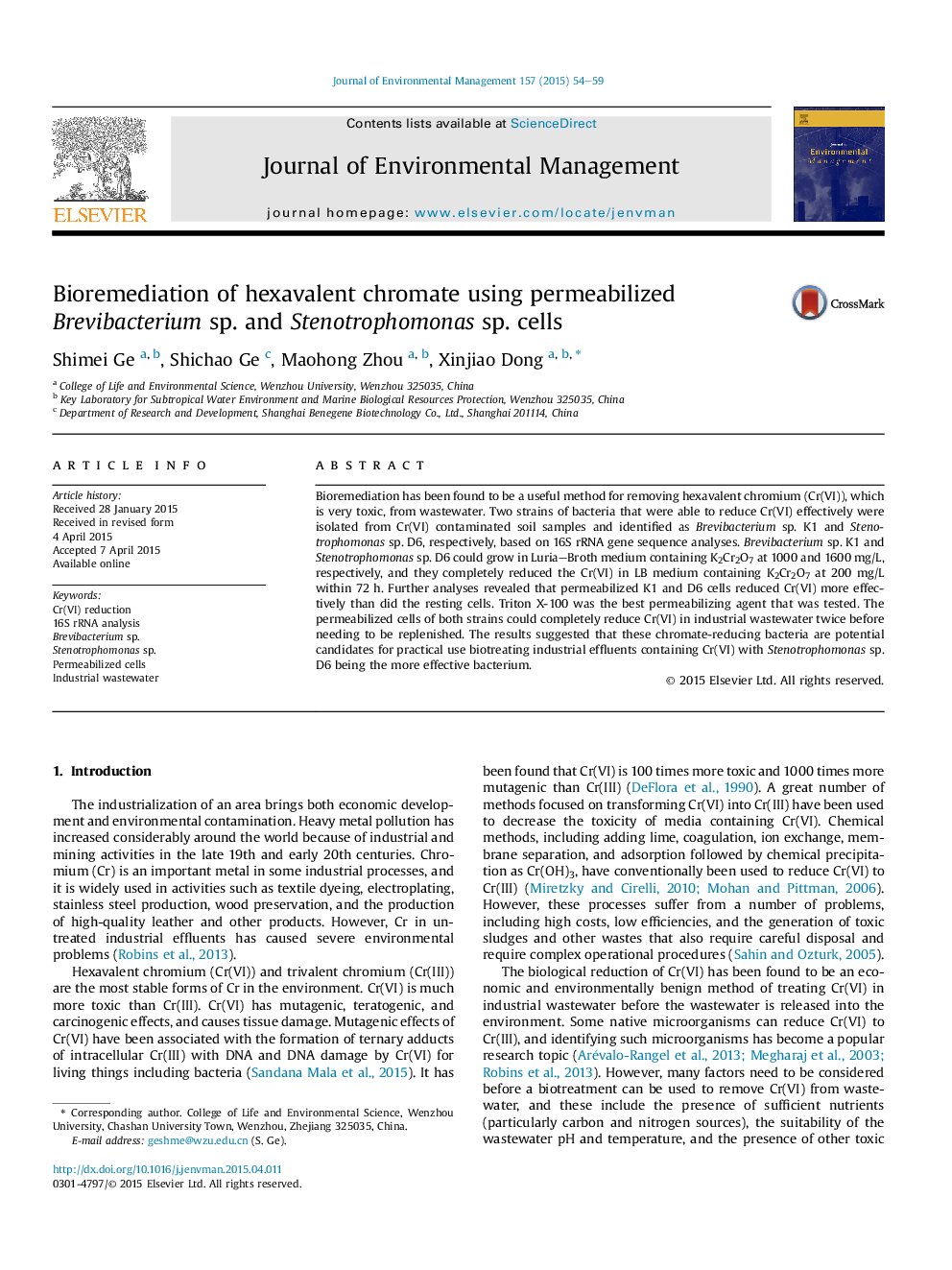| Article ID | Journal | Published Year | Pages | File Type |
|---|---|---|---|---|
| 7482074 | Journal of Environmental Management | 2015 | 6 Pages |
Abstract
Bioremediation has been found to be a useful method for removing hexavalent chromium (Cr(VI)), which is very toxic, from wastewater. Two strains of bacteria that were able to reduce Cr(VI) effectively were isolated from Cr(VI) contaminated soil samples and identified as Brevibacterium sp. K1 and Stenotrophomonas sp. D6, respectively, based on 16S rRNA gene sequence analyses. Brevibacterium sp. K1 and Stenotrophomonas sp. D6 could grow in Luria-Broth medium containing K2Cr2O7 at 1000 and 1600Â mg/L, respectively, and they completely reduced the Cr(VI) in LB medium containing K2Cr2O7 at 200Â mg/L within 72Â h. Further analyses revealed that permeabilized K1 and D6 cells reduced Cr(VI) more effectively than did the resting cells. Triton X-100 was the best permeabilizing agent that was tested. The permeabilized cells of both strains could completely reduce Cr(VI) in industrial wastewater twice before needing to be replenished. The results suggested that these chromate-reducing bacteria are potential candidates for practical use biotreating industrial effluents containing Cr(VI) with Stenotrophomonas sp. D6 being the more effective bacterium.
Keywords
Related Topics
Physical Sciences and Engineering
Energy
Renewable Energy, Sustainability and the Environment
Authors
Shimei Ge, Shichao Ge, Maohong Zhou, Xinjiao Dong,
